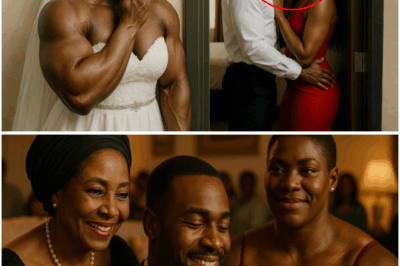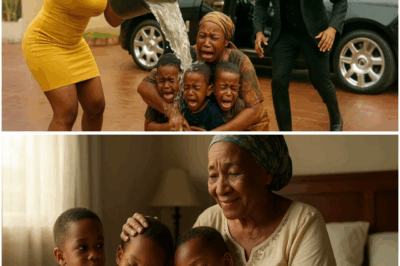From Golden Opportunity to PR Disaster: How the WNBA’s Mishandling of Caitlin Clark is Damaging Its Own Growth and Alienating New Fans
The 2025 WNBA season was poised to be a watershed moment for women’s basketball. With Caitlin Clark—arguably the most electrifying college player of the modern era—joining the professional ranks, the league was gifted a rare cultural moment: a player who could sell out arenas, break television ratings, and spark national conversations about women’s sports. Yet just a few months into her rookie season, what should have been a seamless transition into stardom has instead become a cautionary tale of poor leadership, toxic narratives, and missed marketing opportunities.
The WNBA isn’t just failing to protect Caitlin Clark—it’s failing to understand what she represents. And as each week passes, the mishandling becomes more visible, more divisive, and more damaging to the league’s future.
Caitlin Clark: The Player Who Changed Everything
Before we address the league’s missteps, it’s essential to understand who Caitlin Clark is—not just as a player, but as a phenomenon.
Clark didn’t simply dominate college basketball; she redefined it. With her limitless shooting range, fearless playmaking, and competitive fire, she shattered NCAA records, became a household name, and drew millions of viewers to women’s games that were previously niche in national coverage. Her 2023-2024 senior season at Iowa routinely outdrew NBA broadcasts and even men’s NCAA matchups in terms of viewership. She became the first college player, male or female, to sign major NIL deals with global brands like Nike, State Farm, and Gatorade while still retaining her authentic, Midwestern humility.
When she declared for the WNBA Draft in April 2025, anticipation surged. Ticket prices skyrocketed. Merchandise sold out. The Indiana Fever, who selected her as the No. 1 overall pick, instantly saw their home and road games become sellout events.
The stage was set. All the league had to do was step aside and let the star shine. But instead, it dimmed the lights.
On-Court Targeting: Physicality or Borderline Violence?
One of the earliest signs that something was off was the way Clark was “welcomed” to the league. While the WNBA is undoubtedly physical—priding itself on toughness and grit—Clark has been subjected to an unusual level of targeted aggression that feels personal, not just competitive.
Hard fouls. Off-ball shoves. Hits that wouldn’t look out of place in an NFL highlight reel. One of the most infamous moments came when Chennedy Carter delivered a blindside hip-check to Clark during a dead-ball moment—an incident that went viral for all the wrong reasons.
The play was initially ruled a common foul. No technical. No ejection. Only after overwhelming public outcry did the league retroactively upgrade it to a flagrant. The message was clear: if you hit the league’s brightest star without provocation, the punishment would be mild, delayed, and only happen if social media forces your hand.
This isn’t about making the game soft or protecting a rookie from the realities of pro basketball. It’s about basic consistency and league optics. If a generational talent is being physically targeted in a way that threatens her health—and your brand—and you do nothing, what exactly are you promoting?
League Silence and the Narrative Vacuum
Worse than the hits is the silence.
Rather than rally behind their top draw, the WNBA and many of its most visible players have adopted an eerily cold posture toward Clark. Instead of positioning her as the exciting new face of the league, the WNBA’s marketing continues to focus heavily on “legacy stars,” many of whom haven’t connected with younger fans the way Clark has.
There’s also a growing sense that some veteran players resent her popularity. In press conferences and post-game interviews, there have been dismissive quotes. Shrugs. Shade. And sometimes, outright refusal to even acknowledge Clark’s impact.
Without guidance from the league office, the narrative has been left for the media—and worse, Twitter mobs—to define. Is Clark “too privileged”? Is she “overhyped”? Is she “just a shooter”? These questions dominate the online discourse, while the WNBA itself seems content to let chaos dictate public opinion.
This is marketing malpractice. When the NBA had LeBron James enter the league in 2003, they didn’t sit back. They built campaigns. They shaped the story. They made sure fans knew: this is our guy, and we’re proud of it.
The WNBA, in contrast, seems almost allergic to celebrating Clark too loudly—for fear of alienating current stars, drawing backlash, or appearing “biased.” But is it bias… or smart business?
The Cultural Undercurrents: Race, Resentment, and Reality
We cannot talk about Caitlin Clark’s polarizing reception without addressing the elephant in the room: race.
Clark is a white woman in a league where over 70% of players are Black. She is also straight, comes from a conservative-leaning state, and often carries herself with a no-nonsense, let-my-game-do-the-talking persona. Whether intentionally or not, her identity has become a lightning rod in a league that prides itself on progressive values, social justice, and inclusion.
Some critics argue that Clark is being “handed” popularity because of her race and appearance—that she is a product of white media overhyping her at the expense of equally deserving Black athletes. Others claim the backlash she receives is rooted in a refusal to accept a new kind of star—one who doesn’t fit the typical WNBA mold.
Both arguments contain truth. But here’s the reality: Clark’s appeal isn’t about race alone. It’s about excellence, storytelling, and connection. She captivated the country not because she’s white—but because she was different, relentless, and gave fans something they hadn’t seen before.
And regardless of who her fans are—male, female, white, Black, conservative, liberal—the WNBA should be embracing the moment, not dissecting the demographics.
Missed Marketing Goldmines and Sponsorship Setbacks
Beyond on-court issues and locker room politics, the WNBA is fumbling the business side too. With Clark’s arrival, ticket demand soared. Social media engagement spiked. Merchandise revenue rose. ESPN and Amazon reported record viewership for Fever games. And yet… the league’s national branding, sponsorship outreach, and ad campaigns have failed to capitalize on this momentum.
Why aren’t there Caitlin Clark commercials during WNBA breaks? Why aren’t highlight reels plastered across the league’s homepage? Why aren’t we seeing her face in Times Square or on ESPN countdowns?
Part of this is a long-standing issue within the WNBA: its reluctance to center the league around individuals. While that ethos may work in a team-first philosophy, it simply doesn’t work in the entertainment business. Fans don’t tune in for brands—they tune in for stars.
Clark is a generational marketing asset. And every day that the WNBA delays building around her is a day lost in growing its mainstream appeal.
What the WNBA Needs to Do—Now
The situation isn’t irreversible. There’s still time to pivot, reframe, and take control of the narrative. Here’s how:
1. Publicly Support Clark—and All Rookies—Through Leadership
The league must send a clear message: intentional fouls and personal targeting won’t be tolerated, regardless of the player involved. Protecting star power is not favoritism—it’s strategy.
2. Create a Narrative That Embraces Diversity, Not Division
Clark is not the enemy of veteran stars. She is their legacy in action. The WNBA should be hosting roundtables, documentaries, and commercials that unite past legends with present talent. Imagine a campaign with Diana Taurasi, A’ja Wilson, and Caitlin Clark speaking together about growth, change, and competition. That’s how you build bridges—and brands.
3. Push Clark into the Spotlight, Without Apology
She’s already there. Now control it. Feature her. Celebrate her. Use her success to draw attention to the league’s broader ecosystem. It’s not selling out—it’s selling smart.
4. Encourage Veteran Players to Mentor, Not Muzzle
The tension between rookies and vets is normal—but it shouldn’t be toxic. The league should incentivize mentorship, media collaboration, and joint appearances. The “old guard” and the “new wave” can co-exist—if the WNBA gives them reason to.
Conclusion: A Pivotal Moment, Wasted or Won
In many ways, Caitlin Clark is a mirror. She reflects the best and worst of where the WNBA is right now—a league bursting with potential but shackled by insecurity, politics, and fear of change.
Clark didn’t ask to be the savior of the league. But she could be the spark that forces it to evolve. The question is whether the WNBA will embrace the opportunity—or squander it for the sake of pride.
History doesn’t wait. Fans won’t wait. And if the WNBA wants to remain relevant—and thrive—it can no longer afford to fail its brightest star.
Not again. Not now.
News
Direktor Carballo Bumanat: “Hindi Sisikat si Eman sa Pag-aartista, Mag-Boxing na Lang!”
Matinding usap-usapan ngayon sa social media ang diretsahang pahayag ni Direktor Carlo Carballo tungkol kay Eman, anak ng isang kilalang…
Matapos ang Sunod-sunod na Rally: Nag-Alab ang Social Media sa Usapang Suporta kay PBBM at VP Sara
Matapos ang magkakasunod na rally sa iba’t ibang lugar sa bansa, umingay ang social media sa maiinit na palitan ng…
Matipunong Babaeng Nobya Dumating Nang Walang Paunawa, Nasaksihan ang Nakakabagbag-damdaming Pagtataksil ng Groom sa Araw ng Kasal
Sa isang marangyang bulwagan, puno ng bulaklak at mga panauhin, ang bawat isa ay abala sa paghahanda para sa pinakahihintay…
Milyonaryo Dumating Nang Walang Paunawa at Nasaksihan ang Asawang Bago Niyang Buhos ng Maruming Tubig sa Kanyang Ina at Anak — Ang Ginawa Niyang Isa Lahat Nagulat
Sa isang marangyang mansyon sa gitna ng lungsod, ang bawat sulok ay sumasalamin sa kayamanan at tagumpay. Ngunit sa loob…
Milyonaryo Nakita ang Mahirap na Bata na Hawak ang Kambal na Babae, Nangangatog sa Bagyong Niyebe — Ang Ginawa Niyang Isa ay Lahat Nagulat
Sa gitna ng malakas na bagyo ng niyebe, habang ang hangin ay tila kumakagat sa balat, may isang batang lalaki…
Natagpuan ng Milyonaryo ang Batang Babae sa Kalye na Nangangatog sa Lamig, Hawak ang Anak — Ang Ginawa Niyang Isa ay Nagbago ng Lahat
Sa isang malamig na gabi sa lungsod, naglalakad sa makipot na eskinita si Mara, isang batang babae na halos mawalan…
End of content
No more pages to load












